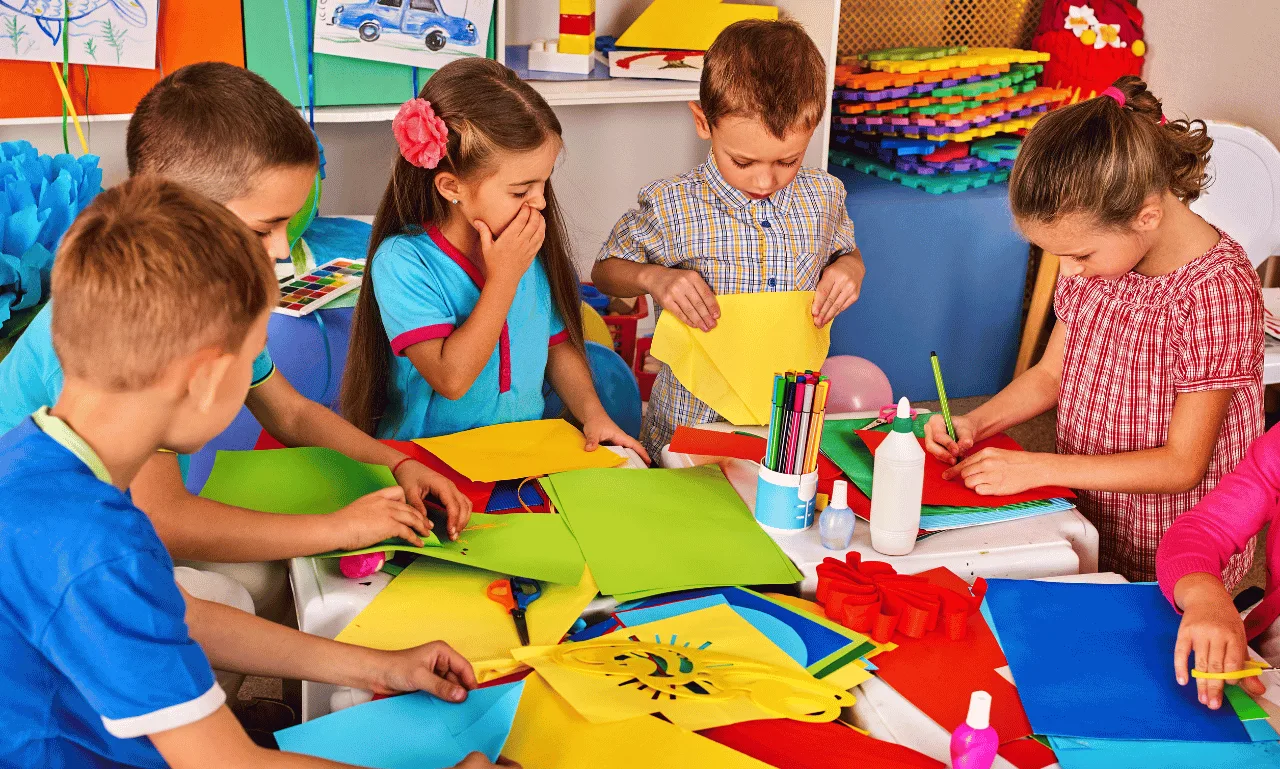Phone:
(+65)8319-0742
Scaffolding in child development is a technique used in early childhood education to provide demonstrations and intentional support to children as they learn and grow. It is similar to the concept of scaffolding in construction, where temporary structures are used to complete building projects. In child development, scaffolding allows children to learn complex concepts in small, manageable steps.
When it comes to scaffolding in child development, there are various techniques that educators can employ to support children’s learning. These techniques include asking prompting questions, making suggestions, providing activities just above their ability level, showing and telling, building off prior knowledge, guiding “think out loud” time, pre-teaching vocabulary, adjusting to the child’s learning style, and encouraging metacognition.
Scaffolding in child development offers numerous benefits, including flexible learning formats, building confidence, encouraging growth at all competence levels, and helping identify gaps in understanding. However, it also presents challenges such as requiring significant planning time and understanding individual children’s needs.
Key Takeaways:
- Scaffolding in child development is a technique that provides demonstrations and intentional support to children as they learn and grow.
- It involves various techniques such as asking prompting questions, making suggestions, and providing activities just above the child’s ability level.
- Scaffolding in child development offers flexible learning formats, builds confidence, and helps identify gaps in understanding.
- It requires significant planning time and understanding individual children’s needs.
- Scaffolding in child development is crucial for creating a supportive and empowering learning environment.
What is Scaffolding in Child Development?
Scaffolding in child development is a teaching technique that provides demonstrations and intentional support to children as they learn and grow. It is akin to the concept of scaffolding in construction, where temporary structures are used to reach higher levels of a building project. In child development, scaffolding enables children to learn complex concepts by breaking them down into smaller, more manageable steps.
Adapting teaching strategies to match each child’s needs and abilities, scaffolding in child development guides children through their learning journey by providing the necessary guidance and support. This technique helps children build their skills and knowledge gradually, leading them towards independent learning and problem-solving.
Through scaffolding, educators and caregivers play a crucial role in offering the right amount of assistance and support to children, ensuring that they can successfully navigate challenges and master new concepts. By providing this structured support, scaffolding facilitates children’s development and empowers them to take ownership of their learning.
Scaffolding Techniques in Child Development

There are various scaffolding techniques that educators can use to support child development. These techniques include:
- Asking prompting questions
- Making suggestions
- Providing activities just above the child’s ability level
- Showing and telling
- Building off prior knowledge
- Guiding “think out loud” time
- Pre-teaching vocabulary
- Adjusting to the child’s learning style
- Encouraging metacognition
Asking prompting questions encourages children to think critically and come up with their own answers. Making suggestions offers hints and guidance without giving away the answer, allowing children to build up to understanding on their own. Providing activities just above the child’s ability level challenges them while still allowing for progress. Showing and telling, as well as building off prior knowledge, help children make connections and understand new concepts. Guided “think out loud” time encourages critical thinking and discussion. Pre-teaching vocabulary introduces new concepts and words through visuals and examples. Adjusting to the child’s learning style ensures that instruction is tailored to their individual needs. These scaffolding techniques can be applied to various aspects of child development, such as cognitive, social, emotional, and language development.
Scaffolding Techniques Example:
| Technique | Description | Example |
|---|---|---|
| Asking prompting questions | Encourages critical thinking and problem-solving | Teacher: “Why do you think this happened?” |
| Making suggestions | Offers guidance without providing the answer | Teacher: “Have you considered trying it this way?” |
| Providing activities just above the child’s ability level | Challenges the child to progress and achieve new skills | Teacher: Assigning a slightly more advanced math problem |
| Showing and telling | Provides visual and verbal demonstrations for better understanding | Teacher: Showing a diagram while explaining a scientific concept |
| Building off prior knowledge | Connects new information to what the child already knows | Teacher: Relating a new vocabulary word to a previously learned word |
Importance of Scaffolding in Child Development
Scaffolding plays a crucial role in child development as it provides the necessary support for children to build their skills and knowledge. It helps children overcome challenges and accomplish tasks that are beyond their current abilities, bridging the gap between what they can do on their own and what they can achieve with assistance. By offering the right level of support at the right time, scaffolding enables children to learn and grow in a safe and supportive environment.
Scaffolding in child development also allows for individualized instruction, catering to each child’s unique needs and learning style. This personalized approach ensures that children receive the appropriate level of guidance and encouragement, enhancing their learning experience. By adapting teaching strategies to match each child’s abilities and interests, scaffolding promotes engagement and active participation.
Furthermore, scaffolding fosters independence, confidence, and a sense of accomplishment. As children master new skills with the support of scaffolding, they gain the confidence to tackle more challenging tasks on their own. This gradual release of responsibility empowers children to become self-directed learners, capable of solving problems and making decisions independently.
In summary, the importance of scaffolding in child development cannot be overstated. It provides the necessary support for children to learn and grow, fostering independence, confidence, and a solid foundation for future success.
| Benefits of Scaffolding in Child Development | Challenges of Scaffolding in Child Development |
|---|---|
|
|
Benefits of Scaffolding in Child Development

Scaffolding in child development offers numerous benefits for both children and educators. One of the key benefits is its flexibility in format, allowing instruction to be tailored to each child’s learning style. This ensures that all children, regardless of their preferred learning method, have the opportunity to grasp concepts and acquire new skills.
Scaffolding also builds confidence in children by providing a structured path for them to move from feeling overwhelmed to self-assured. It offers support and guidance, helping children overcome challenges and achieve tasks that may initially seem too difficult. As children experience success through scaffolding, their confidence grows, motivating them to take on new learning opportunities.
Additionally, scaffolding encourages growth at all competence levels. It recognizes that each child has unique strengths and areas for improvement, and supports their progress accordingly. By focusing on individual growth rather than a one-size-fits-all approach, scaffolding nurtures children’s abilities and promotes continuous development.
Scaffolding is also a valuable tool for educators to identify gaps in children’s understanding. Through ongoing assessment and observation, educators can gauge each child’s progress and adjust instruction to address any misconceptions or areas of weakness. This targeted support helps ensure that children are building a solid foundation of knowledge and skills.
Furthermore, scaffolding promotes active engagement, critical thinking, and problem-solving skills. It encourages children to think independently, analyze information, and find solutions on their own. By guiding children through these cognitive processes, scaffolding fosters a deeper level of learning and equips children with essential skills for future academic and personal success.
| Benefits of Scaffolding in Child Development |
|---|
| Flexibility in format, catering to diverse learning styles |
| Confidence-building, empowering children to tackle challenges |
| Growth at all competence levels, recognizing individual progress |
| Identification of gaps in understanding, informing targeted instruction |
| Promotion of active engagement, critical thinking, and problem-solving skills |
Challenges of Scaffolding in Child Development

While scaffolding in child development offers numerous benefits, it also brings forth its own set of challenges for educators. Understanding and effectively implementing scaffolding techniques require significant planning time. Educators need to carefully consider each child’s unique needs, learning style, strengths, and weaknesses to provide the appropriate level of support.
Accurately assessing a child’s level of development can be a challenge, as it involves understanding their current abilities, preferences, and temperament. Educators must strike a balance and provide support that is neither too advanced nor too basic to ensure optimal learning and growth. Scaffolding also demands ongoing observation and reflection to ensure that the provided support is meeting each child’s needs effectively.
The challenges of scaffolding in child development can be summarized as follows:
- Significant planning time required
- Understanding individual children’s needs
- Accurately assessing a child’s level of development
- Ongoing observation and reflection
Addressing these challenges requires educators to invest time and effort in understanding each child’s unique characteristics and tailoring their approach accordingly. By overcoming these challenges, educators can provide effective scaffolding that supports child development and facilitates optimal learning outcomes.
Applying Scaffolding in Child Development
To effectively apply scaffolding in child development, educators need to have a deep understanding of children’s overall development, individual learning approaches, and their current interests, knowledge, and skills. It is essential for educators to be present, actively engaged, and responsive to children’s cues during the scaffolding process.
Establish Realistic Learning Objectives
Establishing realistic learning objectives is the first step in applying scaffolding techniques. Educators should set specific goals that align with the child’s developmental stage and abilities. These objectives serve as a roadmap for providing targeted support.
Join Children in their Play
One effective way to apply scaffolding in child development is by joining children in their play. This allows educators to observe their preferences, interests, and responses, providing valuable insights into their learning style and areas of focus.
Tailor Instruction to Enhance Learning
To enhance children’s learning experience, educators should tailor their instruction based on their observations. By adapting teaching strategies and activities to match each child’s unique needs, educators can provide the right level of support.
Use Modeling and Encouragement
Modeling and encouragement are vital scaffolding techniques. Educators can demonstrate tasks and behaviors while providing verbal and nonverbal cues to motivate and guide children. They should praise children’s efforts and provide constructive feedback to reinforce positive behavior and learning outcomes.
Follow the Child’s Lead
By following the child’s lead, educators can build on the child’s interests and strengths, making the learning experience more meaningful and engaging. This approach encourages active participation and promotes a sense of ownership in the learning process.
Offer Choices
Providing choices empowers children to make decisions and take ownership of their learning. Educators can offer a selection of activities or learning materials, allowing children to choose what they want to work on within the established learning objectives.
Join in Play while Allowing the Child to Lead
To support scaffolding, educators should actively participate in play while allowing the child to take the lead. By engaging in collaborative play, educators can provide guidance and support when needed, fostering the child’s independence and problem-solving skills.
Responsive to Children’s Cues
Being responsive to children’s cues is crucial in the scaffolding process. Educators should pay attention to their verbal and nonverbal communication, adapting their strategies and level of support accordingly. This responsiveness ensures that educators are meeting each child’s specific needs and facilitating their progress.
The Zone of Proximal Development in Scaffolding
The concept of the zone of proximal development (ZPD), coined by Lev Vygotsky, is central to the idea of scaffolding in child development. The ZPD refers to the difference between what a child can do and learn on their own and what they can achieve with the help of someone more experienced, such as an educator or caregiver.
Scaffolding occurs within the child’s ZPD, providing the appropriate level of support to bridge the gap between their current abilities and their potential. By offering guidance and assistance at the right time and in the right way, educators can facilitate children’s learning and help them reach their full potential.
Scaffolding as Natural Interactions in Child Development
Scaffolding in child development goes beyond formal educational settings and extends to the natural interactions between caregivers, parents, and young children. Even without realizing it, caregivers and parents naturally engage in scaffolding by providing the right kind of assistance and support to help children learn new ideas and skills.
During everyday interactions, caregivers can effectively scaffold children’s learning by observing and responding to their cues and individual temperaments. This natural form of scaffolding is rooted in a belief in children’s innate motivation and competence, fostering their self-motivation and self-directed learning.
Understanding the process of scaffolding can help caregivers and educators be more intentional in their interactions, creating supportive environments for optimal child development.
| Key Points | Scaffolding as Natural Interactions in Child Development |
|---|---|
| Definition | Scaffolding extends to natural interactions between caregivers, parents, and children. |
| Characteristics | Observing and responding to children’s cues and individual temperaments. |
| Benefits | Promotes self-motivation, self-directed learning, and optimal child development. |
| Significance | Helps create supportive environments and foster children’s growth and learning. |
Image:
Conclusion
Scaffolding in child development is an invaluable technique that supports children’s learning and skill acquisition. Through demonstrations and intentional support, educators and caregivers guide children on their developmental journey by breaking down complex concepts into manageable steps.
This approach utilizes various scaffolding techniques such as asking prompting questions, making suggestions, providing activities just above the child’s ability level, and building off prior knowledge. These strategies enable children to learn and grow at their own pace, fostering independent thinking and problem-solving skills.
Scaffolding offers numerous benefits for children, including flexible learning formats, confidence-building, growth at all competence levels, and the identification of gaps in understanding. Additionally, scaffolding creates a supportive and empowering learning environment that sets the stage for children’s future success.
Despite its undeniable advantages, scaffolding does present challenges, such as the need for significant planning time and a deep understanding of each child’s individual needs. However, the benefits of scaffolding in child development far outweigh these challenges, making it a vital tool for educators and caregivers in nurturing children’s growth and development.
FAQ
What is scaffolding in child development?
Scaffolding in child development refers to a technique used in early childhood education to provide demonstrations and intentional support to children as they learn and grow. It involves breaking down complex concepts into smaller, manageable steps and adapting teaching strategies to match each child’s needs and abilities.
How does scaffolding support child development?
Scaffolding supports child development by providing the necessary support and guidance for children to learn and grow. It bridges the gap between what children can do on their own and what they can achieve with assistance, enabling them to acquire new skills, build confidence, and develop problem-solving abilities.
What are some scaffolding techniques used in child development?
Scaffolding techniques in child development include asking prompting questions, making suggestions, providing activities just above the child’s ability level, showing and telling, building off prior knowledge, guiding “think out loud” time, pre-teaching vocabulary, adjusting to the child’s learning style, and encouraging metacognition.
What is the importance of scaffolding in child development?
Scaffolding in child development is important because it allows children to learn and grow at their own pace while providing the necessary support to bridge the gap between their current abilities and their potential. It fosters independence, confidence, and a sense of accomplishment, setting the foundation for future learning and success.
What are the benefits of scaffolding in child development?
Scaffolding in child development offers numerous benefits, including flexible learning formats, building confidence, encouraging growth at all competence levels, identifying gaps in understanding, promoting active engagement, critical thinking, and problem-solving skills, and setting children up for future success in their educational journey.
What are the challenges of scaffolding in child development?
Some of the challenges of scaffolding in child development include the significant planning time required, understanding individual children’s needs, accurately assessing a child’s level of development, and providing support that is neither too advanced nor too basic. Ongoing observation and reflection are necessary to ensure that the provided support is effective.
How can scaffolding be applied in child development?
To apply scaffolding in child development, educators need to have a deep understanding of children’s overall development, individual learning approaches, and their current interests, knowledge, and skills. They should tailor instruction to each child’s unique needs, join children in their play, observe their preferences and responses, and respond actively and responsively to their cues.
What is the role of the Zone of Proximal Development in scaffolding?
The Zone of Proximal Development (ZPD) is a concept coined by Lev Vygotsky that is central to scaffolding in child development. It refers to the difference between what a child can do and learn on their own and what they can achieve with the help of someone more experienced. Scaffolding occurs within the child’s ZPD, providing the appropriate level of support to bridge the gap between their current abilities and their potential.
How does scaffolding happen in natural interactions in child development?
Scaffolding in child development is not limited to formal educational settings but also occurs naturally in the interactions between caregivers, parents, and young children. Caregivers and parents often engage in scaffolding without realizing it, providing the right kind of assistance and support to help children learn new ideas and skills during everyday interactions.

Mastering Database First Entity Framework: Unleash Power
Unlock the full power of your data-driven applications with Entity Framework Core. This object-relational…

Scaffolding in Education: Empowering Student Growth
In education, scaffolding is a key method that helps students grow. It gives them the support they need…

Scaffolding in Education: Empowering Learners
Scaffolding has changed how teachers teach and students learn. It’s a way to help students reach…

Scaffolded Instruction: Empowering Learners to Grow
In education, scaffolded instruction is a key tool to help all students learn better. It uses differentiated…

Entity Framework Core Database First: Simplified Dev
Welcome to the world of simplified data access with Entity Framework Core Database First! If you’re…
No posts found

















